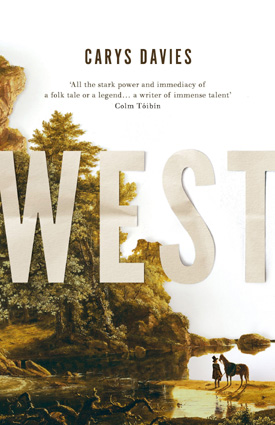What makes a classic Christmas story? When I think about some of the most well-known Christmas tales such as “A Christmas Carol” by Charles Dickens or the short story 'The Greatest Gift' by Philip Van Doren Stern (which inspired the film 'It's a Wonderful Life') or the Christmas sections of “Little Women” by Louisa May Alcott, the predominant festive themes concern homecoming and a spirit of generosity.
Claire Keegan's new novella “Small Things Like These” fits right into this tradition while also providing a stealthy dose of powerful social commentary. It's 1985 in a small Irish town and in the lead up to Christmas, Bill Furlong, a coal and timber merchant is very busy making deliveries to members of the community. Life is hard with the demands of work and family, but he and his wife have a strong partnership raising their five daughters. On Bill's rounds to the local convent - which is one of his best customers - he discovers something extremely distressing about the “training school for girls” which the nuns run there. It leaves him questioning whether he should intervene and how much he's personally willing to risk in order to do what he feels is right.
For such a brief book, this story says so much. It's filled with perfectly-pitched descriptions of physical details and dialogue which bring this humble community to life. There are evocative scenes of preparing a Christmas cake and a festive celebration. At first it feels like a highly supportive environment, but gradually we become aware of the sinister meaning behind what is not said. There's a conversation Bill has with his colleague Mrs Kehoe where she states “Tis no affair of mine, you understand, but you know you'd want to watch over what you'd say about what's there? Keep the enemy close, the bad dog with you and the good dog will not bite. You know yourself.” Though it feels like Bill has a clear moral choice to make there are social and financial pressures which make his decisions much harder.
It's clever how Bill's personal history as an orphan is weaved into the story of the present. He feels extremely fortunate to have had a benefactor who supported him. But there are aspects to his identity which have been hidden from him or not spoken about until an encounter he has while out for a visit. This makes him reflect: “Why were the things that were closest so often the hardest to see?” Keegan brilliantly portrays the way in which we create a narrative about our lives that is strongly influenced by the ideas and values of people around us so that sometimes the truth can remain obscured. But there are moments when it is revealed and this creates startling moments of realisation and ruptures in our reality. This novella dramatises an example of this on both a personal and wider community level.
Keegan's novella does that rare thing of facing the cruel facts of the world and creating a heartwarming story which is in no way sentimental but perfectly justified in its conclusion. It's what makes this novella a genuine Christmas story alongside the fact that it is set around the festive season. “A Christmas Carol” even plays a funny part in the story where Bill remembers the disappointment of being given a copy of the book (which smelled of must.) At the end of the book a note on the text provides some sobering context and information about Magdalene Laundries. Though the facts are shocking, it's even more startling to imagine how many communities must have been quietly complicit with what was happening in these institutions. It's powerful how this story reminds us to be vigilant and care for everyone around us – especially the most vulnerable.












